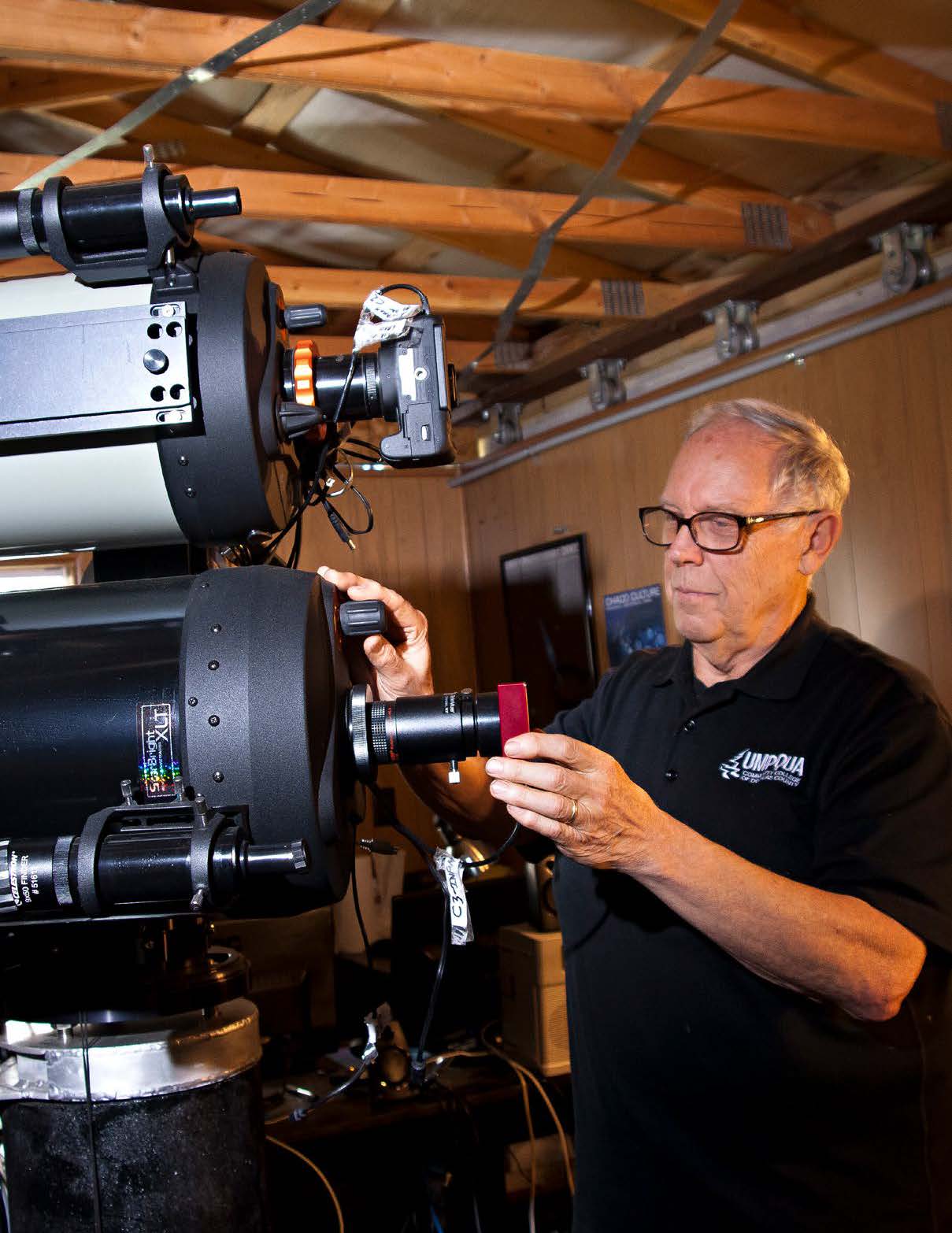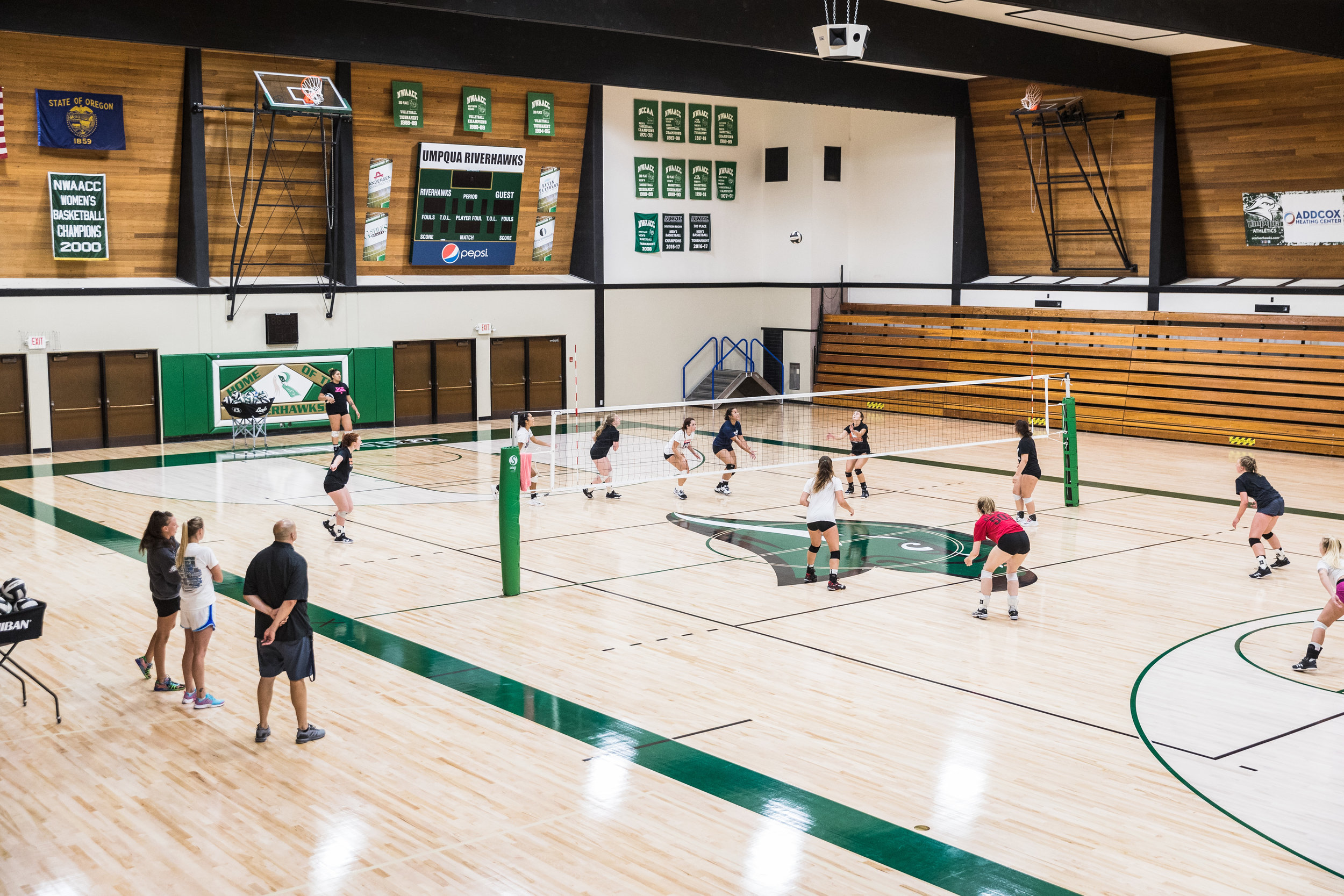Star Power

Through the observatory at Umpqua Community College that bears his name, Paul Morgan is changing the way people view the solar system.
Story by David Shroyer Photos by Tristin Godsey
It’s not often a professor conducts class in a building named after him.
But that’s the short version of Umpqua Community College’s Paul Morgan Observatory.
The observatory sits atop the hill overlooking UCC’s campus in the mountains outside Roseburg along the North Umpqua.
Morgan is the college’s astronomy instructor and the observatory has been his goal since he joined the UCC faculty in 1999.
Completed in 2016, the facility is the only digital observatory of its caliber in the Pacific Northwest. And Morgan is the guy who made it happen.
A native of Roseburg, Morgan earned a doctorate in forest pathology from the University of Washington, then spent 24 years working for the Oregon Department of Forestry. But astronomy has been his passion since childhood and in 1986, he helped create Umpqua Astronomers, a local group of like-minded folks.
He was recruited by UCC and first taught a part-time telecourse that consisted of showing movies twice a week and then leading a student discussion.
“Apparently, I did OK, since I’m still teaching astronomy,” Morgan says.
That led to a few years of bringing his own equipment to campus for a class that met at the college’s track while Morgan lobbied for approval to get an actual observatory built. When it happened, he went about finding ways to raise money for construction.
“I WANTED TO GO DIGITAL TO OVERCOME THE MANY SHORTCOMINGS OF THE OLD SYSTEM OF VISITORS OBSERVING AT AN OBSERVATORY.” — Paul Morgan
Morgan personally acquired grants and donations, the biggest of which came from the Associated Students of UCC. When the observatory opened in spring 2016, the students voted to name it after Morgan.
From the beginning, Morgan wanted the observatory to take advantage of digital technology to shift from what he calls “eyeball to eyepiece.”
“I wanted to go digital to overcome the many shortcomings of the old system of visitors observing at an observatory,” Morgan says, “Instead of long lines at a telescope trying to see something dim and fuzzy.”
The observatory is equipped with five telescopes — one solar and four refracting. Digital cameras are attached to the telescopes, and then connected to computers that transmit the images independently to four large monitors inside the observatory. The images can also be uploaded for Internet streaming to anyone logged in to the session.
“I get to explain as a group what the telescopes are showing and provide much more background and detail,” says Morgan.
Although it is used primarily for astronomy classes, the Paul Morgan Observatory is available for school tours day or night year-round. It’s open to the public, too – also day and night during the fall and spring months, weather permitting.





